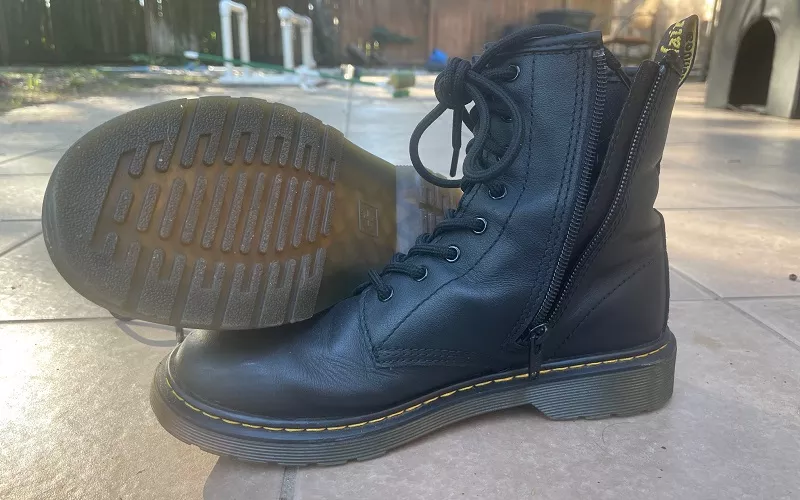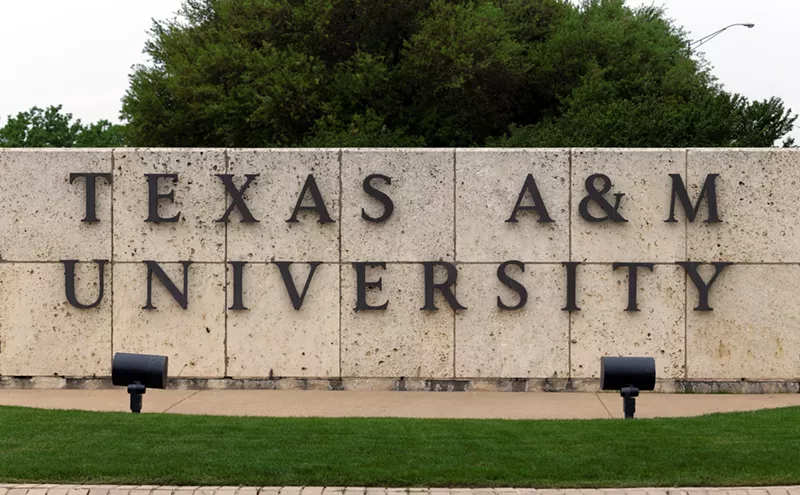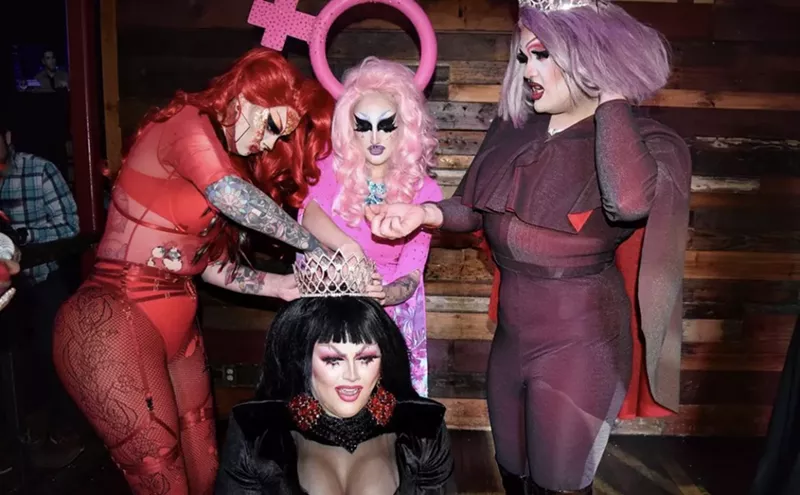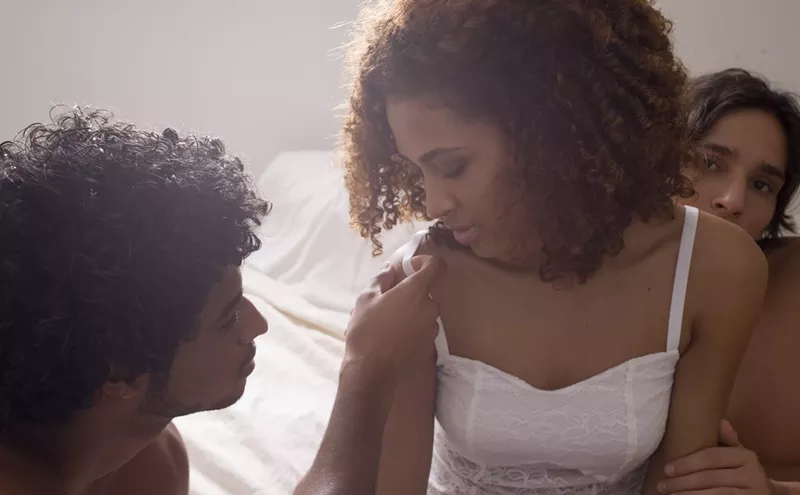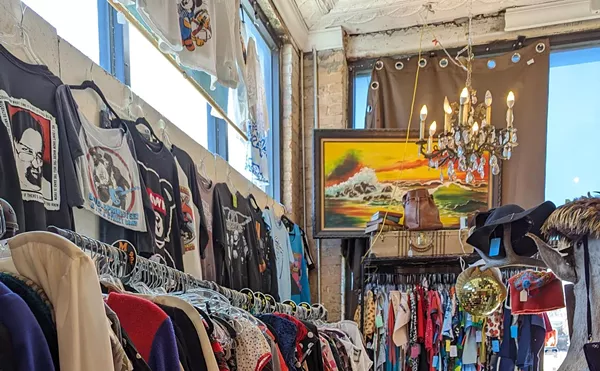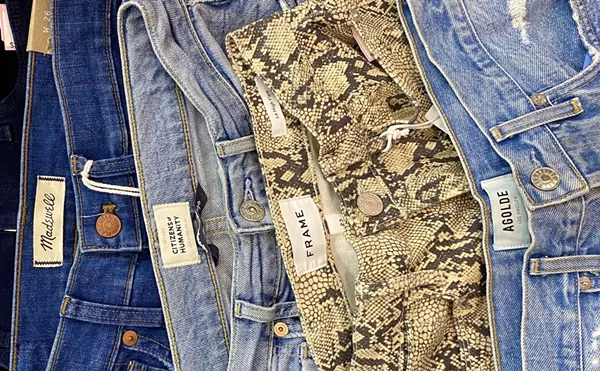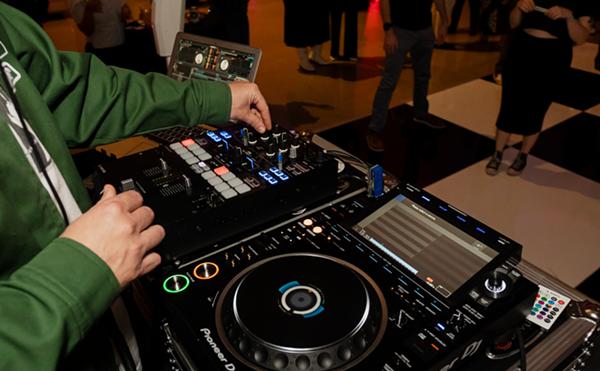It’s November 1993. Meat Loaf is tearing up the charts with “I Would Do Anything for Love (But I Won’t Do That),” while every goth in America is sitting in a theater having big feelings about The Nightmare Before Christmas. Some guy named Rudolph Giuliani has just become mayor of New York City, but few outside the Big Apple have reason yet to know or care. The European Union is established, and down in San Antonio stuntman Randy Hill dies in front of 16,000 fans in a spectacular mid-air crash.
Things in Grapevine-Colleyville Independent School District were comparatively quiet, except for the fact that Grapevine High School faced an outbreak of skinheads. Originating in London in the 1960s, the subculture is marked by shaven heads and working-class clothes, including boots. Specifically, Dr. Martens: the venerable English brand of boot founded in 1947.
Skinheads come in a variety of types and ideologies, but many have been openly associated with white supremacist groups since the 1980s. By 1993, skinheads and neo-Nazis were often synonymous.
Christian Kidd is Texas’ greatest living homegrown punk. The leader of the legendary group The Hates, he remembers running into skinheads during shows around this time and the dangers they presented.
“Unfortunately, it’s just the nature of who some skinhead groups are that there’ll be violence," says Kidd. “For example, in the late ‘80s we were playing a benefit show in the Montrose [in Houston] where instead of kids running a pit on the floor in front of us opposing groups of skinheads got into it. Luckily, by the time someone pulled a gun, and the cops came, the fight had ended up out in the parking lot, and no one was seriously hurt. There was another incident where we went up to Dallas to play a benefit show for a member of the LGBTQ+ community that was badly beaten by a bunch of skinheads.”
Grapevine had somewhere between 15 or 20 skinheads causing trouble in 1993, but never quite enough to get any of them suspended or expelled. The school’s solution was to ban Dr. Martens, labeling the boots "gang attire." The 1990s were a huge moment for the “gang attire” theory of discipline, often used to single out people of color for harassment in the name of school safety. There is no compelling evidence that banning clothes associated with gangs actually improves school safety, but many districts default to it as a cheap, easy solution.
@thegrapevineedit 🚨 *Flashback to 30 years ago!* 🚨 More than 100 students at Grapevine High School made history when they *walked out* in protest after the school banned Doc Martens, a super popular shoe brand at the time. 🎒👞 School officials claimed the boots were linked to skinhead culture, but students weren’t having it! 🙅♀️🙅♂️ They argued that a pair of shoes wasn’t the issue, and real change was needed to address the deeper problems of racial tension in the halls. And guess what? Their voices were heard LOUD and clear! 📢 The protest gained *national attention* and just 24 hours later, the ban was lifted. 🥳✨ These students stood up for what they believed in, proving that real change doesn’t come from banning shoes, but from addressing the root causes of conflict. 💪👟 #Throwback #GrapevineHistory #StandUpForChange #DocMartens ♬ original sound - The Grapevine Edit
This was one of those times. The public relations and communications director for GCISD at the time was Riney Jordan. Now long retired, he remains gobsmacked by the ridiculousness of the ban.
“I felt then the same way I do now: It’s one of the weirdest things I’ve ever heard a high school do,” he says. “They brought a young man down to the office who was being disruptive, and they couldn’t really pinpoint anything he had done too seriously, and the assistant principal said he was wearing gang attire.”
Dr. Martens were incredibly popular in the 1990s with more than skinheads. Goths, punks and people who just liked high-quality boots all wore the brand. They were also expensive, and kids saved all summer to get them. The ban quickly spiraled out of the realm of reason, and 200 kids were sent home in a single day.
“Kids were crying, calling their moms,” says Jordan. “They were saying, ‘I just got these for my birthday and now they won’t let me wear them.’”
The ban became a media sensation. Students staged a massive walkout that was covered by the national press. Jordan remembers fielding calls from the U.K.'s The Guardian.
“The man from The Guardian calls me and he says, ‘Sir, are you aware that the Pope himself wears Dr. Martens?’” says Jordan. “I told him no, but that if the Pope was planning to visit Grapevine High School he should probably wait until this all blows over.”
These days, the high school is a leader in Texas' banned books movement, but Docs are allowed.
The district formed a committee to study the matter while people around the world mocked Grapevine for its shoe ban. Eventually, it was lifted, though two generations of Grapevine High School have continued the tradition of walking out over misguided policies. In 2022, students walked off campus to protest transphobic district rules.
“I think the kids who walked out in protest were great,” says Kidd. “Often these restrictions aren’t so much about curtailing the influence of negative but the blind demand for conformity. These kids were protecting themselves and each other so they can continue to explore their individuality, which is part of the experience of growing up.”
Jordan chuckles when he thinks about the situation now. As far as he is concerned, the reaction taught everyone some valuable lessons.
“It was just one of those dumb things that happen when people don’t think through things,” he says. “We lived through it, we’re better for it, and I have a pair of Dr. Martens myself now. They’re good shoes.”

